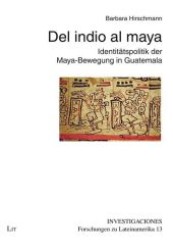- ホーム
- > 洋書
- > 英文書
- > Psychology
Full Description
Provides the Most Student Support Mastering the World of Psychology, 5/e, provides students with more support than ever before, thanks to the Survey, Question, Read, Recite, and Review Learning Method, or SQ3R, which is integrated throughout the text. SQ3R shows students the relationship between psychological theory and learning. It is the strongest and most comprehensive program for measuring progress and attaining successful outcomes in Introductory Psychology. MyPsychLab is an integral part of the Wood/Wood/Boyd program. Engaging activities and assessments provide a teaching and learning system that measures students' success. With MyPsychLab, students can watch videos on psychological research and applications, participate in virtual classic experiments, and develop critical thinking skills through writing. 0205969569 / 9780205969562 Mastering the World of Psychology plus NEW MyPsychLab with eText -- Access Card Package Package consists of: 0205206514 / 9780205206513 NEW MyPsychLab with Pearson eText -- Valuepack Access Card 0205968082 / 9780205968084 Mastering the World of Psychology
Contents
In this SectionBrief Table of Contents: Chapter 1: Introduction to Psychology Chapter 2: Biology and Behavior Chapter 3: Sensation and Perception Chapter 4: Consciousness Chapter 5: Learning Chapter 6: Memory Chapter 7: Cognition, Language, and Intelligence Chapter 8: Human Development Chapter 9: Motivation and Emotion Chapter 10: Health and Stress Chapter 11: Personality Theory and Ass Chapter 12: Psychological Disorders Chapter 13: Therapies Chapter 14: Social Psychology Full Table of Contents: Chapter 1: Introduction to Psychology An Introduction to Mastering the World of Psychology Psychology Then and Now Thinking about Theories and Research Descriptive Research Methods The Experimental Method Research Participants Chapter 2: Biology and Behavior Discovering the Mysteries of the Nervous System The Neurons and the Neurotransmitters The Human Nervous System A Closer Look at the Thinking Part of the Brain Age, Gender, and the Brain Beyond the Nervous System Chapter 3: Sensation and Perception The Process of Sensation Vision Hearing and Balance Smell, Taste, and Touch Influences on Perception Principles of Perception Unusual Perceptual Experiences Chapter 4: Consciousness What Is Consciousness? Circadian Rhythms Sleep Dreams Meditation and Hypnosis Hypnosis Psychoactive Drugs Chapter 5: Learning Classical Conditioning Operant Conditioning Cognitive Learning Chapter 6: Memory The Structure of Human Memory A Closer Look at Retrieval Remembering as Reconstruction Forgetting Biology and Memory Memory in Legal and Therapeutic Settings Chapter 7: Cognition, Language, and Intelligence Cognition Language Intelligence Explaining Differences in Intelligence Beyond Intelligence Chapter 8: Human Development Theories of Development Prenatal Development and Infancy Early and Middle Childhood Adolescence. Early and Middle Adulthood Later Adulthood Chapter 9: Motivation and Emotion Explaining Motivation Hunger Sexual Motivation Emotion Chapter 10: Health and Stress Sources of Stress The Health-Stress Connection Health and Illness Lifestyle and Health Chapter 11: Personality Theory and Assessment Psychoanalytic Theories Humanistic Theories Trait Theories Social-Cognitive Theories Personality Assessment Chapter 12: Psychological Disorders Defining Psychological Disorders Anxiety Disorders Schizophrenia Somatic, Dissociative, Sexual, and Personality Disorders Childhood Disorders Chapter 13: Therapies Insight Therapies Relationship Therapies Behavior Therapies Cognitive Behavior Therapies Biomedical Therapies Practical Issues in Psychotherapy Chapter 14: Social Psychology Social CognitionAttraction Conformity, Obedience, and Compliance Group Influence Attitudes and Attitude Change. Prosocial Behavior Aggression Prejudice and Discrimination








